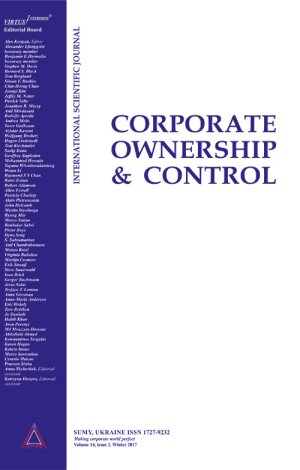
-
 Journal menu
Journal menu

- General information
- Editorial Board and External Reviewers
- Journal Policies
- Publication Ethics and Malpractice Statement
- Instructions for authors
- Paper reviewing
- Article processing charge
- Feedback from stakeholders
- Journal’s Open Access statement
- Order hard copies of the journal
- 50 most cited papers in the journal
CAPITAL STRUCTURE, OWNERSHIP CONCENTRATION AND FIRM PERFORMANCE: EVIDENCE OF REVERSE CAUSALITY HYPOTHESIS IN ASEAN COUNTRIES
Download This ArticleAbstract
This study aims to examine effect of capital structure and ownership structure on firm performance. In addition, this study also examines the existence of reverse causality of the relation between capital structure and performance of firms in three ASEAN countries. We test the reverse causality hypothesis of firm performance to capital structure, which is viewed in light of two competing hypotheses: the efficiency-risk hypothesis and franchise-value hypothesis. In general, the results support the agency–cost hypothesis, and confirm reverse causality hypothesis in in the sample firms, through the existence of entrenchment effect in firms with the lowest and highest level of ownership concentration and the franchise value hypothesis.
Keywords: Capital Structure, Ownership Structure, Firm Performance, Reverse Causality Hypothesis, ASEAN
How to cite this paper: Adhari, R., & Viverita (2015). Capital structure, ownership concentration and firm performance: Evidence of reverse causality hypothesis in ASEAN countries. Corporate Ownership & Control, 12(4-4), 451-461. https://doi.org/10.22495/cocv12i4c4p3

















